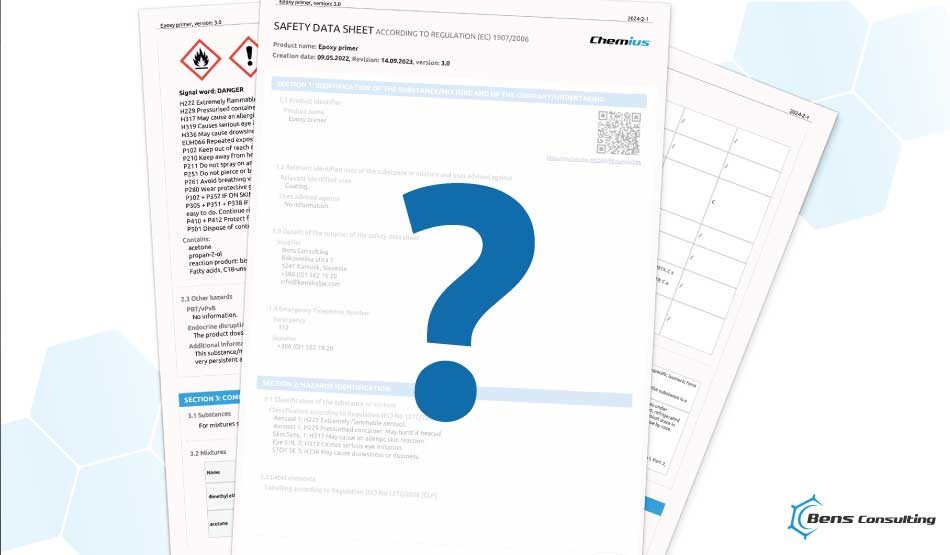08 Jul

Are there instances when we do not need to prepare safety data sheets?
Do cosmetic products require a safety data sheet?
Has legislation provided exceptions where chemicals do not need a safety data sheet? Can you create a safety data sheet for batteries?
These are just four of the common questions we encounter in our work. So, today we will quickly cover when, according to legislation, you actually do NOT NEED to prepare safety data sheets.
EU legislation (REACH) specifies four cases when you do NOT need to prepare a safety data sheet.
Firstly, you do not need to prepare a safety data sheet for chemicals that are marketed in their final form as:
- Medicines and medical devices used in human and veterinary medicine,
- Cosmetic products,
- Food and feed, food and feed additives, flavors, and feed additives.
Secondly, you do not need to prepare a safety data sheet if the chemicals are intended for general use and if the appropriate information is provided to users in another way (on the label). These should be enough for the correct and safe use of the chemical, as well as for taking appropriate protective measures.
Do these two cases seem similar to you? If yes, then this part is for you. Let’s see how these two cases actually differ from one another.
The first case involves “special” chemicals that fall under specific legislation: medicines, cosmetics, medical devices, food, and feed intended for consumers. In the second case, we are talking about “classic” chemicals intended for consumers.
There is also one other important difference. The first group (medicines, cosmetics, food, etc.) is not labeled with CLP labels, while the second group (chemicals) must be labeled with CLP labels even in the case of general use.
The third case where chemicals do not require a safety data sheet pertains to mixtures that are not classified as hazardous but contain hazardous substances. In this case, you are obliged to provide the safety data sheet to professional users upon their request.
The fourth case where a safety data sheet is not required pertains to articles (e.g., lighters, batteries, fire extinguishers, etc.).
For articles, their function is more important than their chemical composition. Therefore, safety data sheets for articles are not legally required. However, in practice, it is sometimes easier and faster to prepare a safety data sheet for the article for the customer than to convince them that they do not need it.
If you also need help resolving challenges in chemical legislation, you can contact me at simona.miklavcic@bens-consulting.eu.
In case you need to create safety data sheets – Chemius advanced algorithms ensure that each SDS is automatically generated based on entered composition, parameters, and the calculated classification of the product. In each section of the SDS, you have an option to quickly customize and fine-tune the content according to your individual needs and requirements.



Simona Miklavčič